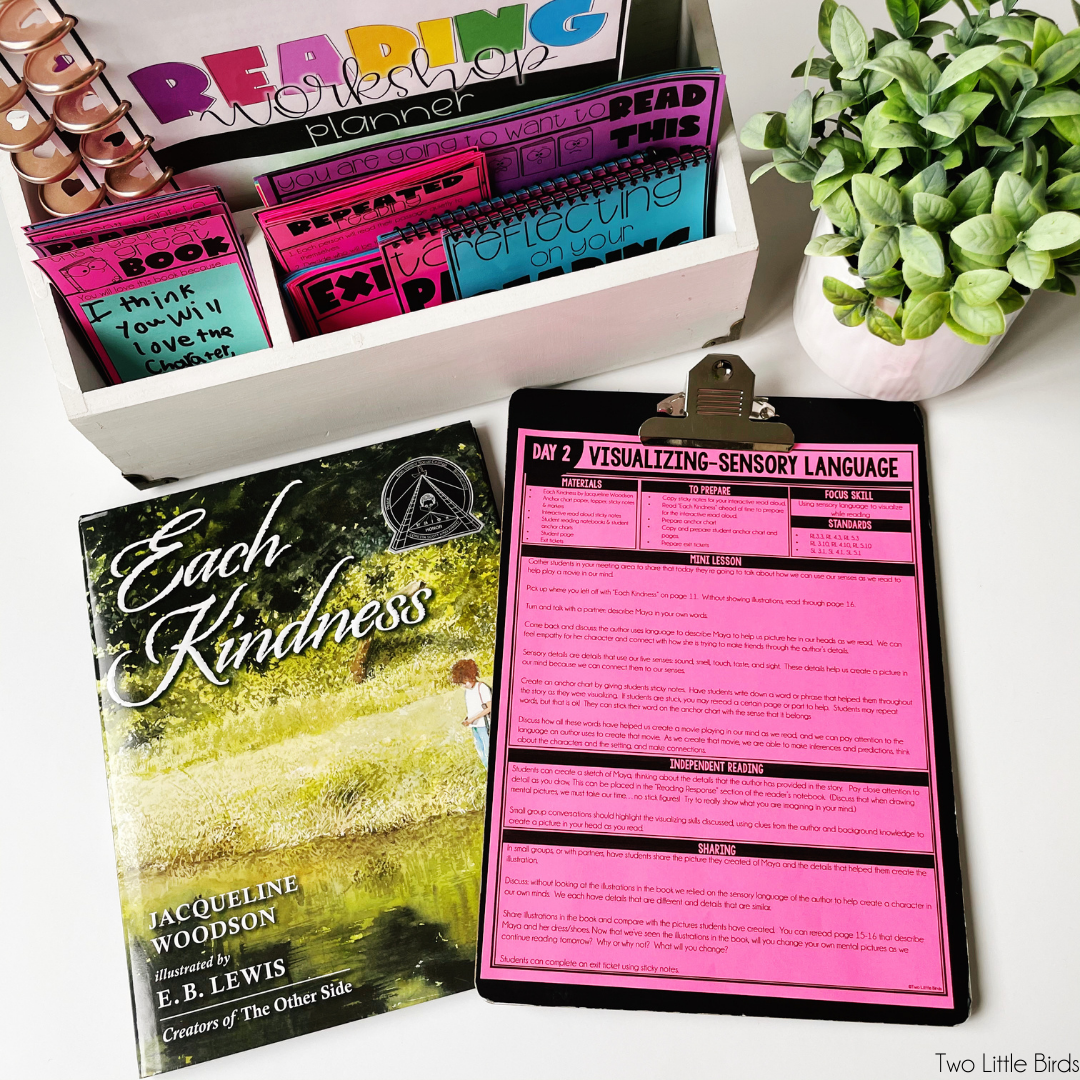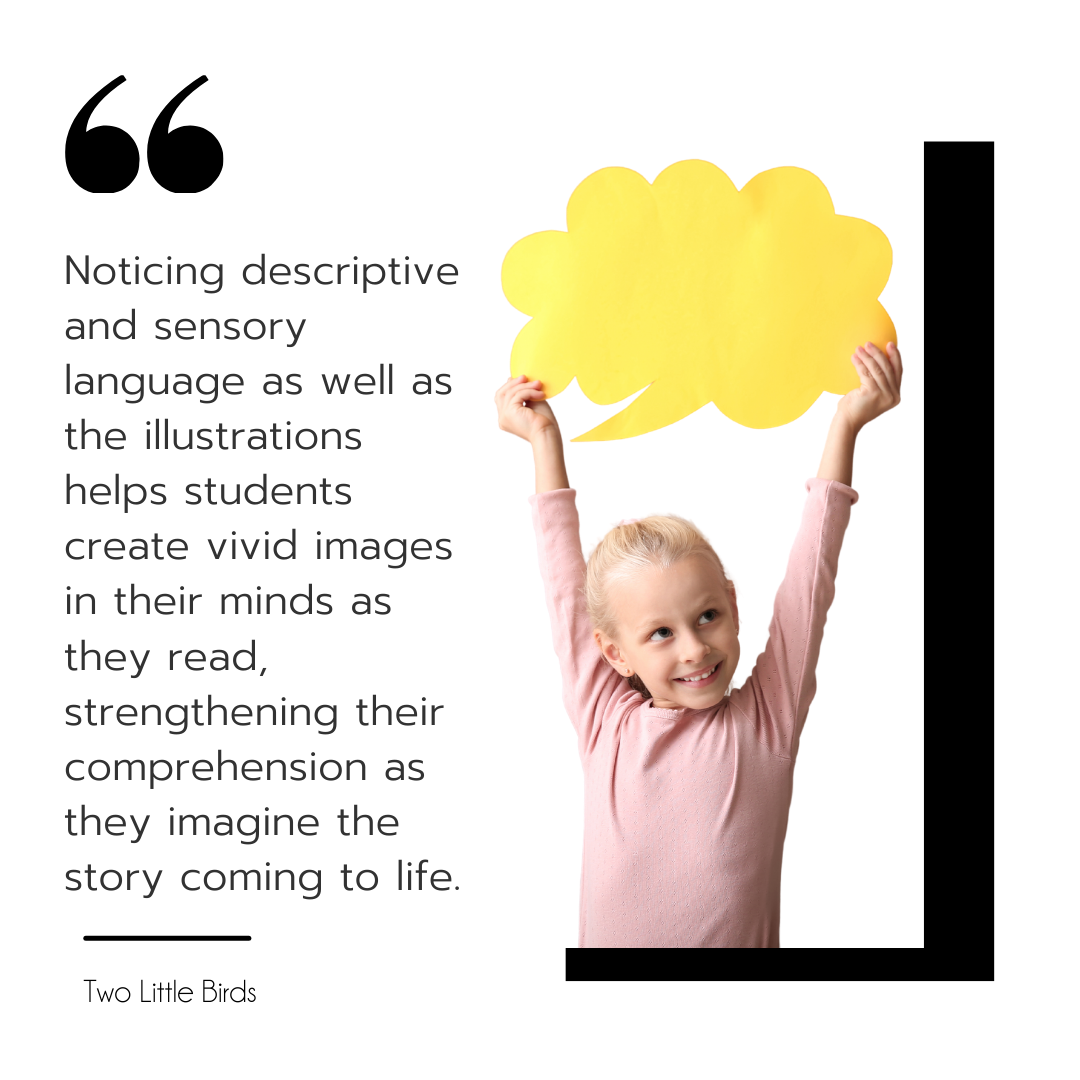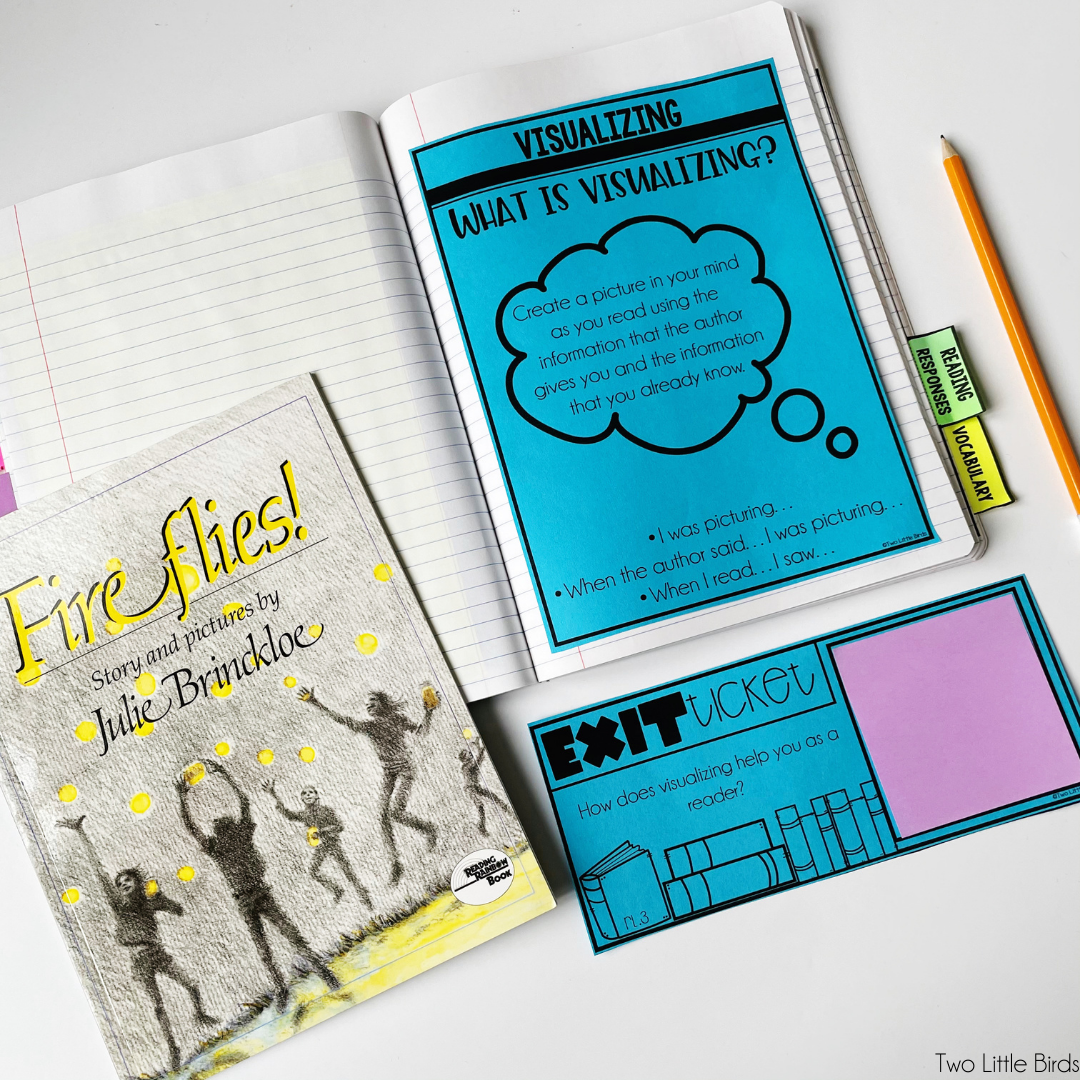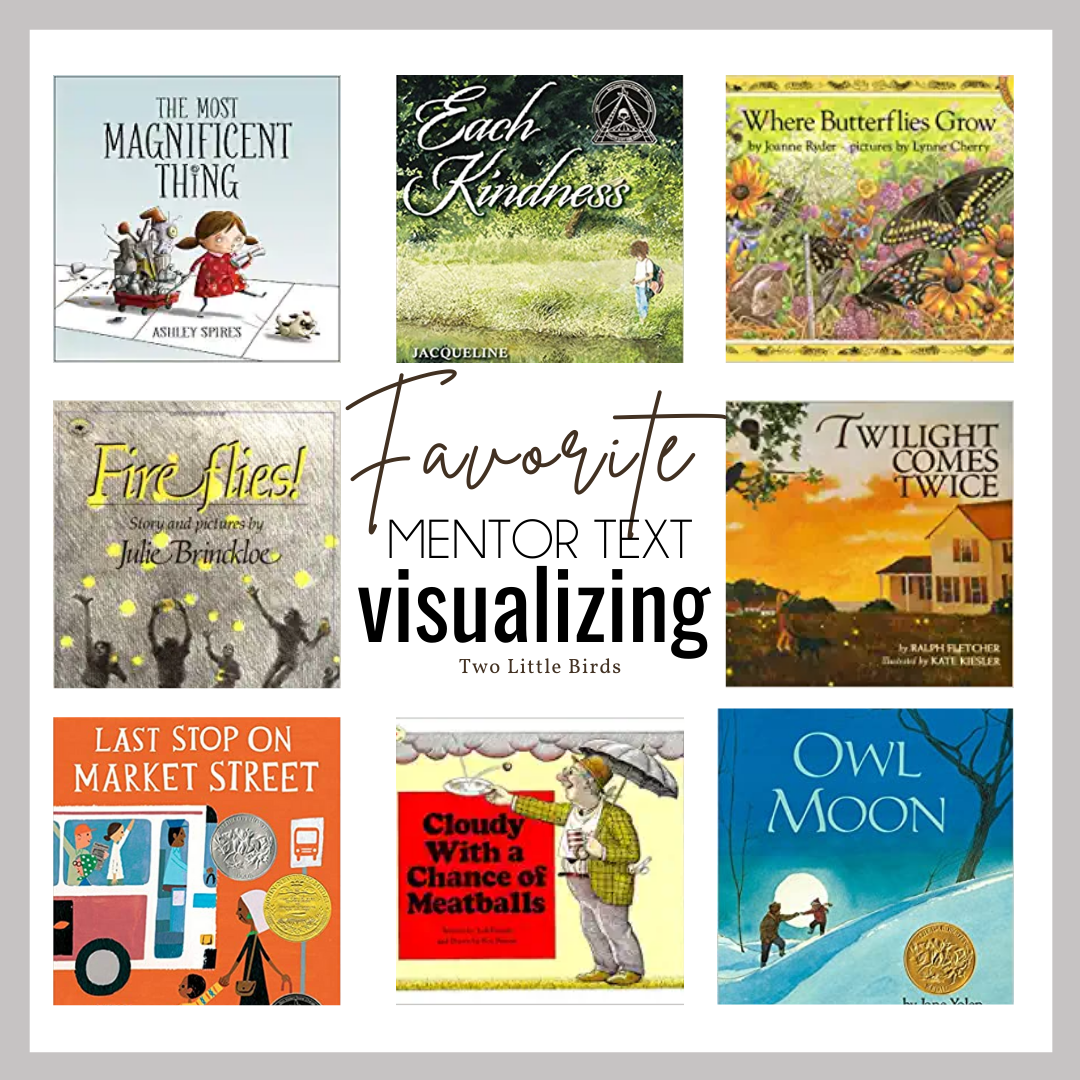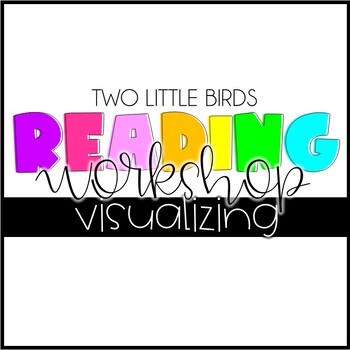Teaching visualizing is always a fun reading skill to teach. Visualizing is a skill that is essential for student’s reading comprehension. It helps students bring life to the stories that they see in their minds as they read. It helps students develop habits as active readers, visualizing scenes based on the author's words.

What is visualizing?
Teaching visualizing helps students learn how to create mental pictures in their minds as they read. When students struggle with creating this mental picture, they struggle with comprehension as well.
Creating a mental image or a “movie in your mind” helps students make connections, connect to their own experiences, relate to characters, build their vocabulary, make connections, make inferences, and more.
Why is visualizing important for student comprehension?
As students learn to visualize, they can dive into making mental images as they read. It allows students to look at the clues that the author gives to help us visualize, strengthening vocabulary.
It also allows students to notice the sensory language and how that language helps us create a picture in our head.
Noticing the author's descriptive and sensory language as well as the illustrations helps students create vivid images in their minds as they read, strengthening their comprehension as they imagine the story coming to life.
The best part about visualizing is that there is NO RIGHT OR WRONG ANSWER! We can each create our own movie in our minds as we read. They may look similar, but they are each unique. And we can change those pictures as we read and find out more about the characters and setting.
What to do when students are struggling with visualizing
If you have readers that are struggling to make mental images as they read or seem frustrated with the idea, think aloud as you read with them. Pause at words or phrases that give you an image in your own mind.
You AND the student can both draw an image and then compare them. Point out what is similar in your images and what is different. Ask for words that helped create that image in their mind and share words that helped you with your image.
If you are able to highlight in the text, highlight descriptive words that stick out to you and ask the student to describe what that would look like.
Visualizing should become an automatic skill for students and is one that is not easy to assess. Check-in with students and ask, what did you picture as you were reading? Share your own idea of a character or a setting and ask students to do the same. Have students close their eyes as you read, cover up pictures, or listen to audiobooks.
Here are some of my favorite books to read to help students visualize:
Shop all of the visualizing resources from this post:
Everything you need to teach visualizing in one place!
Happy Teaching!

